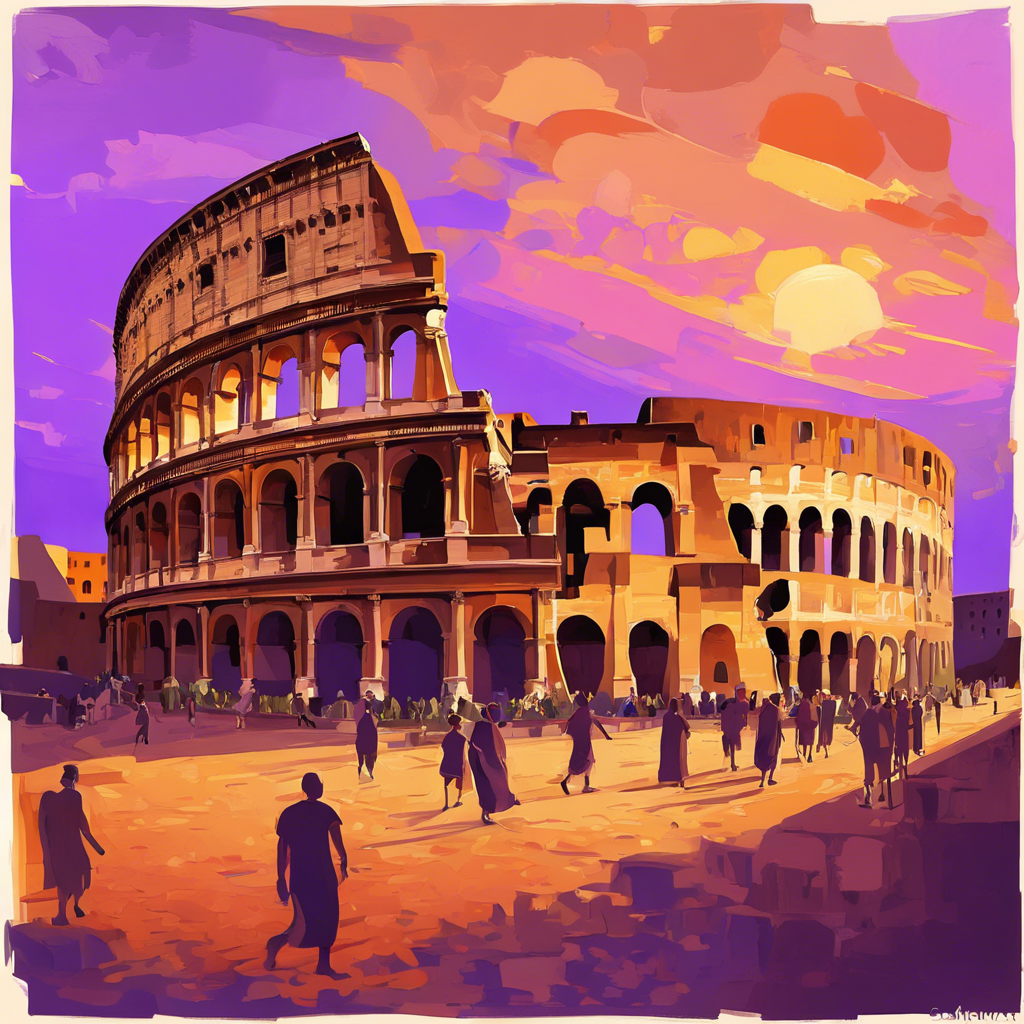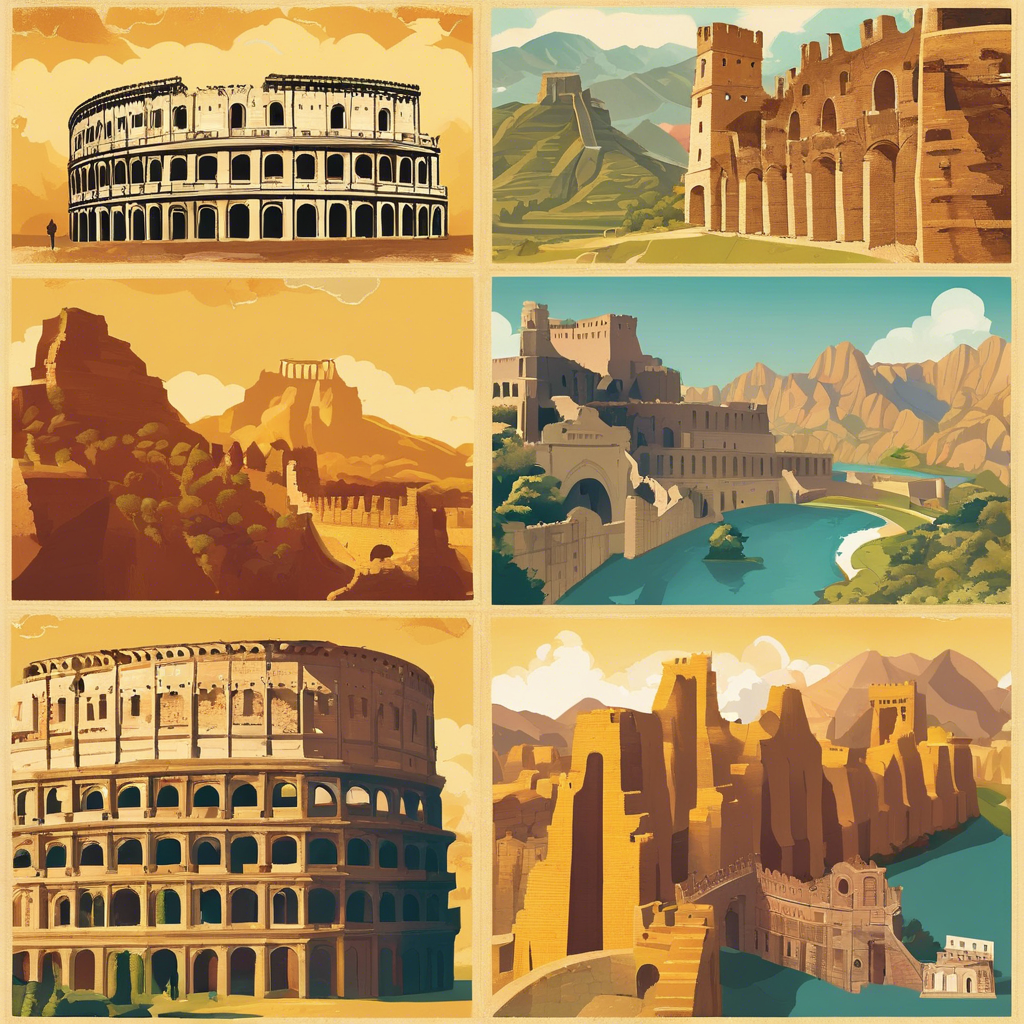Table of Contents
Traveling through time by visiting historical destinations offers a unique and enriching experience. These places not only tell the stories of ancient civilizations but also allow us to walk in the footsteps of those who shaped our world. Let’s embark on a journey across continents to uncover some of the most captivating historical travel destinations.
Europe’s Rich History
Rome, Italy
The Colosseum
One of Rome’s most iconic landmarks, the Colosseum, stands as a testament to the grandeur of ancient Roman architecture and engineering. Built in 80 AD, this amphitheater once hosted gladiatorial contests, public spectacles, and dramatic performances. Walking through its ancient corridors, you can almost hear the echoes of the past.
The Roman Forum
Adjacent to the Colosseum lies the Roman Forum, the heart of ancient Rome’s public life. This sprawling complex of ruins includes temples, basilicas, and public spaces that were once the center of political, commercial, and social activities. Strolling through the Forum is like stepping back in time.

Athens, Greece
The Acropolis
Perched high above the city, the Acropolis of Athens is a symbol of classical Greek civilization. The Parthenon, dedicated to the goddess Athena, is the centerpiece of this ancient citadel. The Acropolis Museum nearby provides a deeper understanding of the artifacts and history of this iconic site.
The Parthenon
A marvel of ancient Greek architecture, the Parthenon was completed in 438 BC. Its Doric columns and intricate sculptures make it a masterpiece of classical art. The Parthenon is not just a building; it’s a symbol of the cultural and intellectual achievements of ancient Greece.
Asia’s Ancient Wonders
Beijing, China
The Great Wall of China
Stretching over 13,000 miles, the Great Wall of China is a monumental feat of ancient engineering. Built to protect against invasions, the wall offers breathtaking views and a glimpse into China’s rich history. Each section of the wall has its own unique story and character.
The Forbidden City
Located in the heart of Beijing, the Forbidden City served as the imperial palace for Ming and Qing dynasties. With over 9,000 rooms, this sprawling complex is a UNESCO World Heritage site that showcases traditional Chinese architecture and imperial history.
Learn more about the Forbidden CIty.
Kyoto, Japan
Fushimi Inari Shrine
Famous for its thousands of red torii gates, Fushimi Inari Shrine is a mesmerizing site dedicated to the Shinto god of rice and agriculture. The winding paths through the gates lead to smaller shrines and offer a peaceful retreat into Japanese spirituality and culture.
Kiyomizu-Dera Temple
Kiyomizu-Dera, or “Pure Water Temple,” is a UNESCO World Heritage site known for its wooden stage that juts out from the main hall, offering panoramic views of Kyoto. Founded in 778 AD, the temple is an architectural marvel set amidst cherry and maple trees.
Africa’s Historical Gems
Cairo, Egypt
The Pyramids of Giza
The Pyramids of Giza, including the Great Pyramid, are the last remaining wonders of the ancient world. These monumental structures were built as tombs for the Pharaohs and have fascinated historians and travelers for centuries. The nearby Sphinx adds to the mystique of the area.
The Sphinx
Guarding the pyramids, the Great Sphinx of Giza is a limestone statue with the body of a lion and the head of a Pharaoh. It is one of the largest and oldest statues in the world, shrouded in mystery and legends.
Marrakech, Morocco
The Medina of Marrakech
A UNESCO World Heritage site, the Medina of Marrakech is a vibrant maze of narrow streets, bustling souks, and historical buildings. The city’s history comes alive through its palaces, mosques, and gardens, offering a sensory overload of sights, sounds, and scents.
Saadian Tombs
Rediscovered in 1917, the Saadian Tombs date back to the Saadian dynasty in the 16th century. The tombs are beautifully decorated with intricate mosaics and provide a glimpse into the opulence of Moroccan history.
The Americas’ Historic Sites
Cusco, Peru
Machu Picchu
Nestled high in the Andes Mountains, Machu Picchu is an ancient Incan city that remains one of the most iconic archaeological sites in the world. Its well-preserved ruins and stunning location make it a must-visit for history and adventure enthusiasts.
Sacsayhuamán
Overlooking the city of Cusco, Sacsayhuamán is a fortress with impressive stone walls. The precision with which the stones were cut and placed is a testament to Incan engineering skills. The site also offers panoramic views of Cusco and the surrounding landscape.
Mexico City, Mexico
Teotihuacan
Once one of the largest cities in the ancient world, Teotihuacan is known for its massive pyramids, including the Pyramid of the Sun and the Pyramid of the Moon. The Avenue of the Dead, lined with temples and palaces, provides a glimpse into the grandeur of this pre-Columbian civilization.
Templo Mayor
Located in the heart of Mexico City, Templo Mayor was the main temple of the Aztec capital Tenochtitlan. Excavations have revealed fascinating artifacts and structures, offering insights into the Aztec culture and religion.
Australia and Oceania’s Past
Sydney, Australia
The Rocks
The Rocks is Sydney’s oldest neighborhood, where you can explore cobblestone streets, historical buildings, and vibrant markets. It’s a place where history meets modernity, offering a peek into the city’s colonial past.
Sydney Opera House
While not ancient, the Sydney Opera House is a modern architectural marvel and a UNESCO World Heritage site. Its unique design and cultural significance make it an iconic symbol of Australia.
Rapa Nui (Easter Island)
The Moai Statues
Easter Island is famous for its Moai statues, massive stone figures carved by the Rapa Nui people. These enigmatic statues, scattered across the island, continue to intrigue historians and travelers alike.
Middle Eastern Marvels
Petra, Jordan
The Treasury
Carved into the rose-red cliffs of Petra, the Treasury is one of the most stunning architectural achievements of the ancient Nabateans. Its intricate facade and historical significance make it a highlight of any visit to Jordan.
The Monastery
A bit of a hike from the main city of Petra, the Monastery is another monumental structure that offers breathtaking views of the surrounding area. It’s less crowded than the Treasury but equally impressive.
Istanbul, Turkey
Hagia Sophia
Hagia Sophia has served as a cathedral, mosque, and now a museum. Its massive dome, stunning mosaics, and rich history reflect the cultural and religious shifts in Istanbul over the centuries.
Topkapi Palace
Once the primary residence of Ottoman sultans, Topkapi Palace is now a museum showcasing imperial collections, including the famous Topkapi Dagger. The palace grounds and architecture offer a glimpse into the opulence of the Ottoman Empire.

Conclusion
Exploring historical travel destinations is more than just sightseeing; it’s an immersive journey into the past. These sites offer valuable insights into the cultures and civilizations that have shaped our world. Whether you’re wandering through ancient ruins, marveling at architectural wonders, or absorbing the rich history, each destination tells a unique story. So pack your bags, embrace your curiosity, and set off on an adventure through time.
Book your flights to these amazing destinations here
FAQs
What is the best time to visit historical sites?
The best time to visit historical sites depends on the destination. Generally, spring and autumn offer mild weather and fewer crowds. It’s advisable to check the specific site for the best visiting seasons.
Are historical sites family-friendly?
Many historical sites are family-friendly and offer educational opportunities for children. It’s a good idea to research ahead and check for any age-related restrictions or activities tailored for kids.
How can I ensure I respect the historical sites?
Respecting historical sites involves following guidelines, not touching or defacing artifacts, and being mindful of local customs and regulations. Always stay on designated paths and avoid littering.
What should I pack for a historical tour?
Comfortable walking shoes, weather-appropriate clothing, a camera, a guidebook, and water are essential for a historical tour. Depending on the location, sunscreen and insect repellent might also be necessary.
Can I take guided tours at historical sites?
Yes, many historical sites offer guided tours, which can enhance your understanding and appreciation of the site. Guided tours often provide detailed information and stories that you might miss on your own.



0 Comment